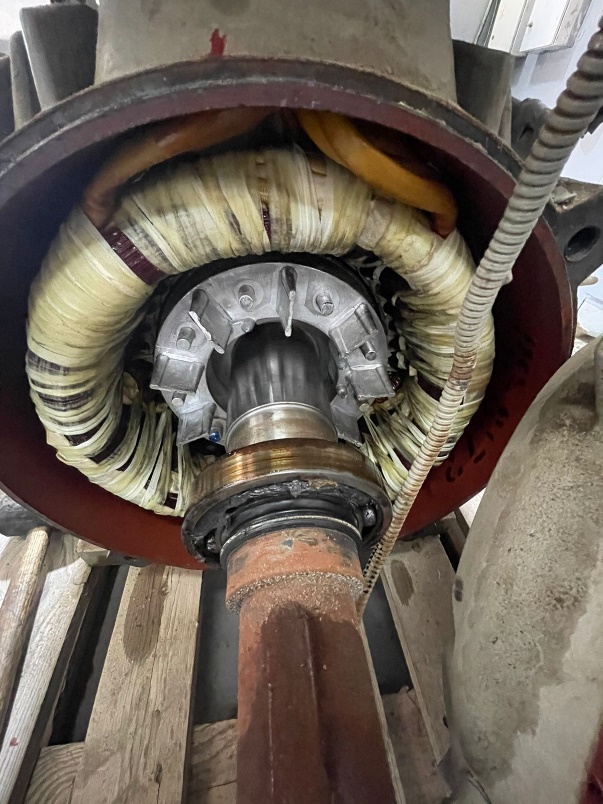Amin saeed Mohamed1, Amro M. Mahmoud2, Reham Mohamed Ibrahim1, Ahmad S. Al Ghamdi2, Basil Alrajhi2, Ayman Samy Abdel-Khalik3 ,Saeed Abdelwahab Alzahrani4
1 OPTIMIZERS COMPANY, EGYPT
2 WTIIRA, Saline Water Conversion Cooperation
3 University of Alexandria university, Faculty of Engineering, EGYPT
4 Saline Water Conversion Cooperation
Abstract #
In the domain of industrial machinery, predictive maintenance plays a pivotal role in minimizing downtime and optimizing operations. This comprehensive research explores an innovative approach to predictive maintenance by harnessing the vibration sensor signals analysis. The primary goal is to autonomously predict the timing and root causes of faults in roto-dynamic machinery, revolutionizing maintenance practices.
The methodology involves advanced artificial intelligence techniques, with a focus on deep learning, to analyse real-time vibration sensor data. Cutting-edge equipment with high-resolution data acquisition capabilities is employed, enhancing signal investigation and discrimination. Machine learning models like Convolutional Neural Networks (CNNs) [19] and Transfer Learning are integrated for accurate fault prediction.
The research demonstrates the effectiveness of deep learning algorithms in predictive maintenance. These algorithms can autonomously identify fault timing and causes, reducing reliance on human expertise and enhancing accuracy. A practical case study involving a centrifugal pump within a Reverse Osmosis process validates the system’s capabilities[26].
The benefits of predictive maintenance using vibration sensor signals are substantial, including cost savings, reduced unplanned downtime, and improved operational safety. The study emphasizes the importance of proactive maintenance in optimizing industrial efficiency and ensuring the longevity of critical equipment.
The device underwent rigorous testing at the Jubail pilot plant in WTIIRA premises, where it was installed in the pump of the nano unit for an extensive one-month trial period. During this testing phase, the device demonstrated its capabilities by promptly detecting an alarm signal related to the bearing of the pump. This early warning provided crucial insights into the machinery’s health and potential issues, identifying breakdowns and facilitating timely maintenance interventions. The successful trial at the Jubail pilot plant underscored the device’s practical applicability and its potential to revolutionize predictive maintenance practices in the industrial sector.
This research showcases the transformative potential of artificial intelligence and deep learning in predictive maintenance. Proactive maintenance practices are highlighted as essential for operational efficiency and the preservation of vital industrial equipment.
Introduction #
Pumps are crucial devices within the desalination industry, serving as the lifeblood of various processes critical to freshwater production. Desalination mainly has two operation techniques membrane (reverse osmosis) and thermal (Multi stage flash and Multi effect desalination) [1]. In the realm of Reverse Osmosis (RO), pumps play a pivotal role as the main driving force behind the pressurization of seawater, facilitating its passage through semi-permeable membranes to separate salt and impurities [2]. This process underpins the efficiency and productivity of RO systems, making pumps an essential component in the quest for freshwater generation. Moreover, pumps find their significance in Multi-Stage Flash (MSF) and Multi-Effect Distillation (MED) systems by circulating water in the heat exchanger area. They maintain the circulation required for the evaporation and condensation stages, ensuring that thermal desalination processes operate optimally [3]. Thus, pumps are not only the heartbeat of the desalination industry but also a testament to the critical synergy of mechanical and thermal processes in meeting the world’s growing freshwater needs.
This was the driver for this research, to mainly predict the fault and its timing to avoid any forced shutdown and increase plant reliability, which will lead to reduce the water unit cost.
In the industrial machinery, the pursuit of seamless and uninterrupted operations has long relied on the discerning eye and expertise of human vibration analysts. These professionals have played a pivotal role in detecting faults within roto-dynamic machinery, offering invaluable insights into the reliabilty of critical equipment. However, as technology advances and operational demands grow more complex, the need for autonomous and real-time fault detection becomes increasingly pronounced [4].
The core objective of this research is to pioneer an intelligent system capable of autonomously detecting faults in roto-dynamic machinery, minimize the necessity for human interaction, and thereby elevating the accuracy and speed of condition monitoring. The cornerstone of this research lies in the utilization of microprocessor-based intelligence.
In this research, bound the power of artificial intelligence, leveraging a sophisticated AI software built on the Python programming language. Coupled with a cutting-edge data acquisition card, we interface vibration accelerometers to capture real-time raw signals in the amplitude-time domain. This synergy of advanced technology boasts a high-resolution 24-bit analog-to-digital converter (ADC) and a remarkable sampling rate of 48,000 samples per second (S/s), affording us the highest degree of signal investigation and discrimination across all types of signals.
on the test was conducted on a 75 kW centrifugal pump. Operating at various load through variable frequency driver for the Reverse Osmosis process
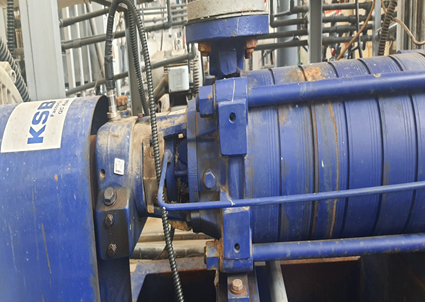
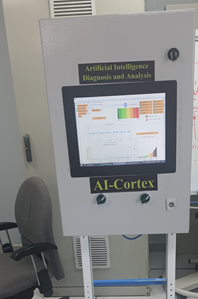
Figure 1. sensor installation on the pump and system installation
Methodology #
Fault diagnosis is the process of extracting and analysing the characteristic data of the equipment[5] to obtain the state of the equipment and judge whether the equipment is abnormal. Generally, fault diagnosis technology includes three tasks:
fault detection, which is used to detect equipment faults;
fault isolation, which is used to locate and classify faults;
fault estimation, which is used to determine the nature and level of faults.
There are three kinds of fault diagnosis methods: experience-based method, model driven method and data driven method
The experience-based method is used in systems that lack information and are not easy to model[10], and requires a lot of expert experience; the model driven method relies on accurate mathematical model and requires a lot of expert experience too. The data driven method mainly adopts various data mining technologies to obtain the key information hidden in the data, analyses the state of the equipment, and achieves the goal of fault detection, diagnosis and isolation. Compared with the experience based and model driven methods, the data driven method solves the problem of relying too much on expert experience and mathematical model. With the rapid development of information technology, data-driven fault diagnosis technology [12] has been developing rapidly and been widely used. Fault diagnosis based on deep learning is an important data-driven fault diagnosis method as in figure 2.
Fault diagnosis based on deep learning Deep learning is new research in the field of machine learning. It makes machine learning closer to the original goal — artificial intelligence (AI) [7]. With the help of strong learning ability, deep learning transforms the low-level features of the input data into high-level features, simulates very complex functions, and obtains the inherent laws of sample data. Fault diagnosis technology based on deep learning takes feature learning as the main purpose. With the development and application of Convolutional Neural Network (CNN) figure 3, Deep Belief Network (DBN), Generative Adversarial Network (GAN), Transfer Learning and other algorithms, the application of fault diagnosis based on deep learning is more and more common.
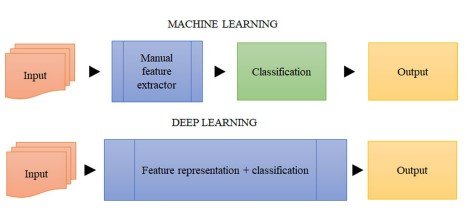
Figure.2 machine learning (ML) vs deep learning (DL)

Figure3: CNN architecture
SO, fault diagnosis using AI plays a significantly important role [11] in reducing both operation and maintenance costs and ensuring safe operations and it generally has three diagnosis steps:
1. Sensor data that can show the health status of equipment is collected.
2. The features are extracted from the collected data by various algorithms.
3. According to the extracted fault-sensitive features, various ML algorithms are used to identify and classify the faulty states of equipment. With the rapid development of DL.
In this case a regular trend analysis for the parts (break down) estimated for avoid the failure of machine parts and this is a highest priority aspect for the possessor of right to maintain the machines in good working condition without facing the unplanned or off schedule shutting down
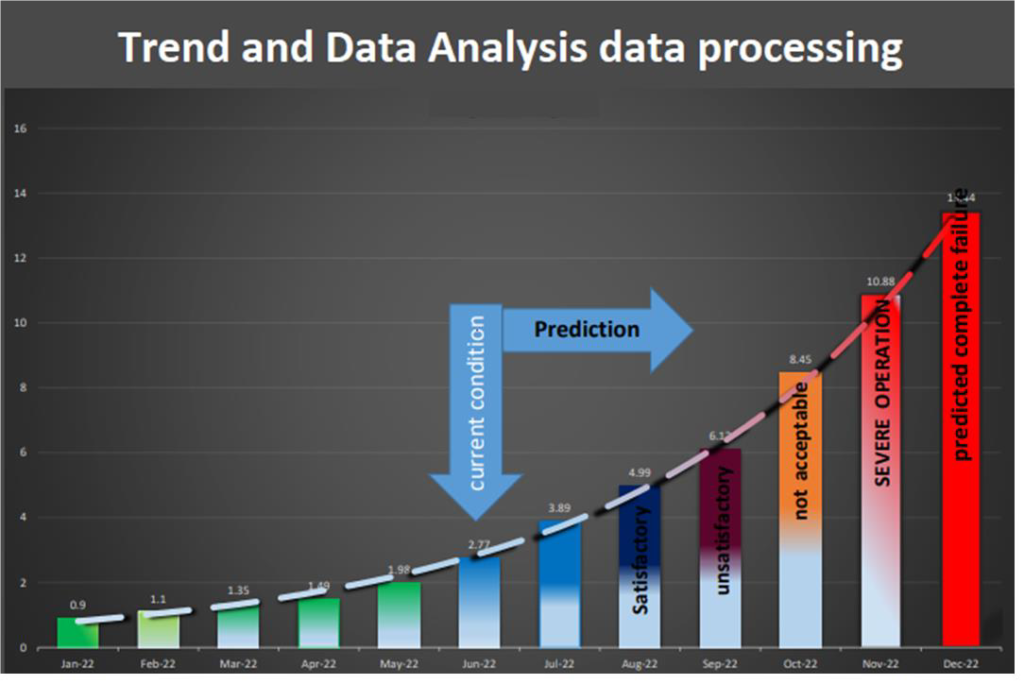
Figure 4: represent an example for trend analysis
Evaluation test
The advanced system of artificial intelligence was tested on the pump shown in figure 1 as discussed which has the following characteristics:
that the system is placed on a pump that is likely to have a specific defect In the following report, some points are reviewed that indicate the presence of an accuracy or defect in the artificial intelligence program |
| In the event of running the program, the program, after a measurement period of about 3-4 seconds, determined a degree of severity of the above-average type, which is close to a very dangerous condition, and therefore the occurrence of an imminent defect and the possibility of a breakdown in the pump, but the program cannot determine the time of the breakdown except after a period of time Specific to complete the rest of the inputs and determine the most accurate times for the collapseHowever, the extrapolated signals, as in Figure 4, show that a maximum value of mechanical vibration occurred at a frequency of 1.3 kHz, with a warning that this potential defect is a defect of the bearings.
Figure 4 shows another application used, but less than developed, for measuring signals |
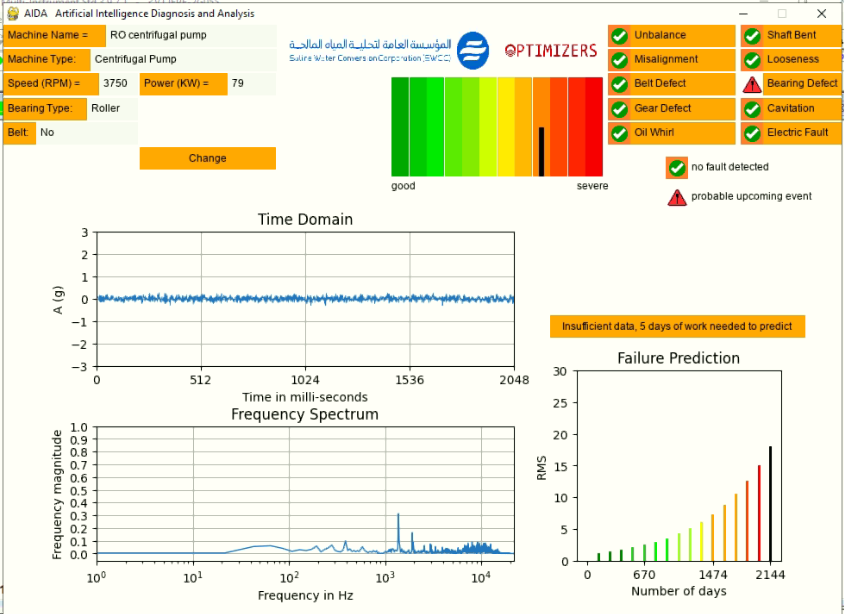
Figure 5: represent the image of operating AIDA program referring to fault
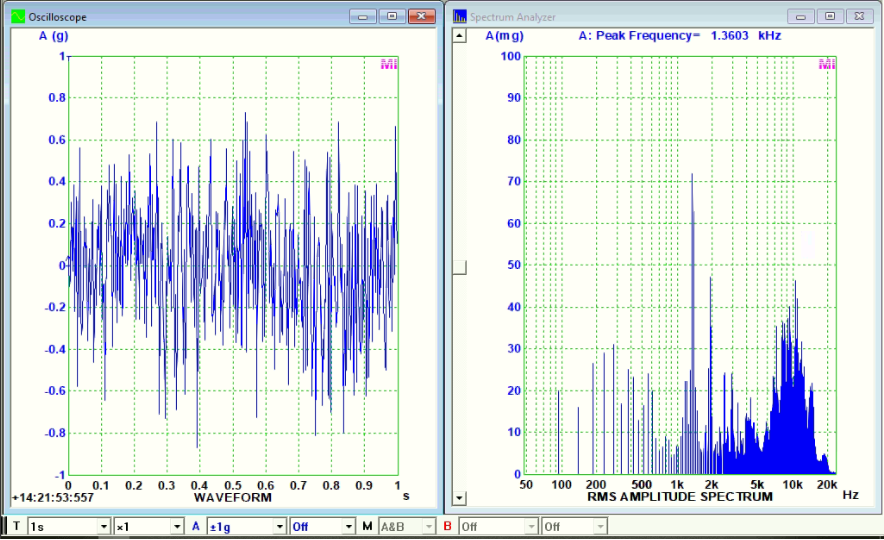
Figure 6: represent time wave form and FFT wave form
Whereas, if compared to any traditional system, it is found that the defects related to the bearings indicate the presence of mechanical vibration resulting from the defects of the dynamic bearings in the figure 6 , and this is according to the tables and scientific references listed by the American Vibration Institute, which is subject to the American Petroleum Institute .
From the figure, it is clear that the current range of the possibility of a malfunction is a defect in the bearings of the machine, and the defect is from the second stage, as the frequency is between 600 Hz and less than 3 kHz, which indicates that the remaining life of the bearings is from 10-20% of its life default
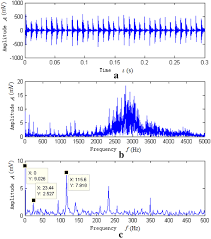
Figure 7: represent the bearing fault standard wave form
| Determining the malfunction and making the claim that it is a bearing issue[21],is not an exact engineering act, but the artificial intelligence must determine what the malfunction is exactly, and therefore the computer does coordination and scrutiny with the highest accuracy and knows where the problem is located inside the bearing, so is it the rotating elements or External or internal framework, and this is what the program is developed for |
| The system must collect data n for a certain period of time to obtain the best accuracy in reading, which would store the data and create a time visualization with very high accuracy through artificial intelligence and make a graphic curve for the user to show the earliest time period in which the machine may be destroyed as a result of the accumulation of mechanical vibration data as shown in the figure 4.After disintegration of the machine it was obvious that the bearing has been subjected to a severe operating condition due to lack of greasing as in image
Figure 8: represent identical fault detected by the AIDA |
In design consideration and after the system delivery the designer / possessor of rights shall run a vibration analysis testing which will indicate the severity and or the normal operation of items according to the ISO Standards 10816-3 as represented in fig 8

Fig 8: represent the severity chart of machine classification in ISO standard
The computer, based on a pre-set database, matches the standard table used ISO 10816, which is responsible for determining the best operating conditions according to the value of mechanical vibration, as in Figure 8
Conclusion #
With the development of science and technology, the continuous improvement of data acquisition, the continuous maturity of data mining, the continuous improvement of computing power and the continuous optimization of algorithms, it is possible to apply artificial intelligence analysis for fault diagnosis. Fault diagnosis technology based on deep learning has become popular research and continues to mature. It will solve the difficulty of modelling, identification, and positioning of traditional fault diagnosis, and ensure the safety of production and life.
The successful evaluation test of utilizing artificial intelligence (AI) and machine learning for pump fault diagnosis marks a significant milestone in the field of predictive maintenance. The test, conducted on a pump within the Jubail pilot plant, demonstrated the potential of AI in autonomously detecting faults and pinpointing their nature, particularly identifying bearing defects. This achievement underscores the transformative power of advanced technology, including deep learning, improved data acquisition, and refined algorithms. By harnessing AI’s capabilities, industries can revolutionize their approach to equipment health monitoring, ensuring reliable operations while minimizing downtime and maintenance costs. The proven effectiveness of this approach would play a central role in optimizing industrial processes, enhancing efficiency, and prolonging the lifespan of critical machinery.
References #
[1] Zeyad Moustafa Ghazi, Syeda Warisha Fatima Rizvi, Wafa Mohammad Shahid, Adil Muhammad Abdulhameed, Haleema Saleem, Syed Javaid Zaidi,An overview of water desalination systems integrated with renewable energy sources,Desalination,Volume 542,2022.
[2] Young M. Kim, Seung J. Kim, Yong S. Kim, Sangho Lee, In S. Kim, Joon Ha Kim, Overview of systems engineering approaches for a large-scale seawater desalination plant with a reverse osmosis network,Desalination,Volume 238, Issues 1–3,2009.
[3] Elrefaay, Amr & Kim, Yeonghyeok & Ben Mansour, Ridha & Al-Aithan, Ali & Lee, Younggeun & Ahmed, Sultan & Varshney, Hirdesh & Chung, Hyunchul & Bamardouf, Khalid & Hamed, Osman & Al-Ghamdi, Ahmed & Derman, Faisal. Experimental analysis and techno-economic study of once through long tube MSF desalination plants. DESALINATION AND WATER TREATMENT.2017.
[4] George Luger,Artificial Intelligence: Structures and Strategies for Complex Problem Solving 6th Edition, published by Addison Wesley 2008.
[5] applications of artificial intelligence in fault detection and prediction in technical systems
Behzad Ghasemi Parvin
Ataturk University
Leila Ghasemi Parvin
ANKARA HACI BAYRAM VELI UNIVERSITY
2023
[6] Fault Detection and Classification in Micro Grid Using AI Technique
B. Koushik Aryan ,M Tech Power Systems VNRVJIET, Hyderabad, India
O. Sobhana , EEE Dept VNRVJIET, Hyderabad, India
G.C. Prabhakar EEE Dept VNRVJIET, Hyderabad, India
N. Amarnadh Reddy EEE Dept VNRVJIET, Hyderabad, India
2022 IEEE
[7] Mariño, J. R. H., Moraes, R. O., Oliveira, T. C., Toledo, C., & Lelis, L. H. S. (2021). Programmatic strategies for real-time strategy games. Proceedings of the AAAI Conference on Artificial Intelligence, 35 (1), 381–389.
[8] Cropper, A., & Dumančic, S. (2020). Learning large logic programs by going beyond entailment. In Proceedings of the Twenty-Ninth International Joint Conference on Artificial Intelligence, pp. 2073–2079. International Joint Conferences on Artificial Intelligence Organization.
[9] Bit-Monnot, Ghallab, M., & Ingrand, F. (2016). Which contingent events to observe for the dynamic controllability of a plan. International Joint Conference on Artificial Intelligence (IJCAI).
[10] Combi, C., Hunsberger, L., & Posenato, R. (2014). An Algorithm for Checking the Dynamic Controllability of a Conditional Simple Temporal Network with Uncertainty – Revisited. Agents and Artificial Intelligence.
[11] Liu, W., Zhang, X., Li, S., & Ying, M. (2010). Reasoning about cardinal directions between extended objects. Artificial Intelligence, 174(12-13), 951–983.
[12] Li, B., Chenyuan, B., & Lu, Q. (2014). Review on intelligence fault diagnosis in power networks. Power System Protection and Control, 42(3), 146-153.
[13] Srinivasan, D., Cheu, R. L., Poh, Y. P., & Ng, A. K. C. (2000). Automated fault detection in power distribution networks using a hybrid fuzzy–genetic algorithm approach. Engineering Applications of Artificial Intelligence, 13(4), 407-418.
[14] Okereke & Adimora, Kyrian & Mba, C. (2021). Application of Artificial Intelligence in Fault Diagnosis of Automotive Systems. Nigerian Research Journal of Engineering and Environmental Sciences. Volume 6(1). 347-356.
[15] Y. Yuan, P. Liu and Y. Liu, The application analysis of fault diagnosis with artificial Intelligent for industrial equipment, 2020 IEEE 2nd International Conference on Civil Aviation Safety and Information Technology (ICCASIT), Weihai, China, 2020,
[16] ArnoldMand Bruls O 2007 Convergence of the generalized- scheme for constrained mechanical systems. Multibody System Dynamics 18(2), 185–202.
[17] Belytschko T and Hughes TJR 1983 Computational Methods for Transient Analysis. North-Holland.
[18] Cardona A and Geradin M 1989 Time integration of the equations of motion in mechanism analysis. Computers and Structures 33(3), 801–820.
[19] Casadei F 2010 Numerical simulation of fast transient dynamic phenomena in luid-structure systems. Proceedings of a course given at Universitat Politecnica de Catalunya, Barcelona, JRC.
[20] Cassano A and Cardona A 1991 A comparison between three variable-step algorithms for the integration of the equations of motion in structural dynamics. Computational Mechanics, 11, 223–233.
[21] Lens EV, Cardona A and Geradin M 2004 Energy preserving time integration for constrained multibody systems. Multibody System Dynamics 11(1), 41–61.
[22] Newmark N 1959 A method of computation for structural dynamics. Journal of the Engineering Mechanics Division of ASCE (85 (EM3)), 67–94. Proc. Paper 2094.
[23] Park KC 1975 An improved stifly stable method for direct integration of nonlinear structural dynamics. Journal of Applied Mechanics, 42(2), 464–470.
[24] Wave Field in Real Media: Wave Propagation in Anisotropic,Anelastic and Porous Media , Elsevier, 2001.
[25] N. Bleistein, J.K. Cohen, and J.W. Stockwell, Jr., Mathematics of Multidi-mensional Seismic Imaging, Migration, and Inversion , Springer, 2001.
[26] D. C. Miller, Anecdotal History of the Science of Sound, Macmillan, New York, 1935 E. Kreyszig, Advanced Engineering Mathematics (9th ed.), Wiley, New York, 2006
[27] B. R. Munson, D. F. Young, T. H. Okiishi and W. W. Huebsch, Fundamentals of Fluid Mechanics (6th ed.), Wiley, Hoboken, NJ, 2009.




